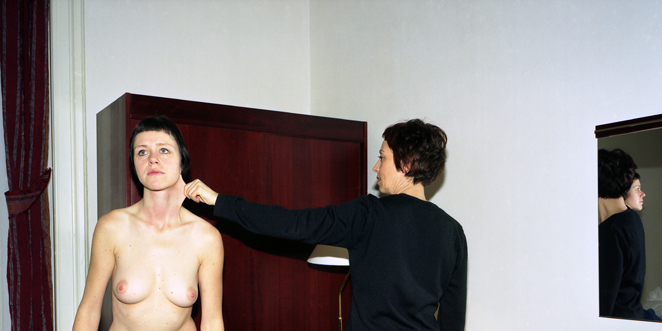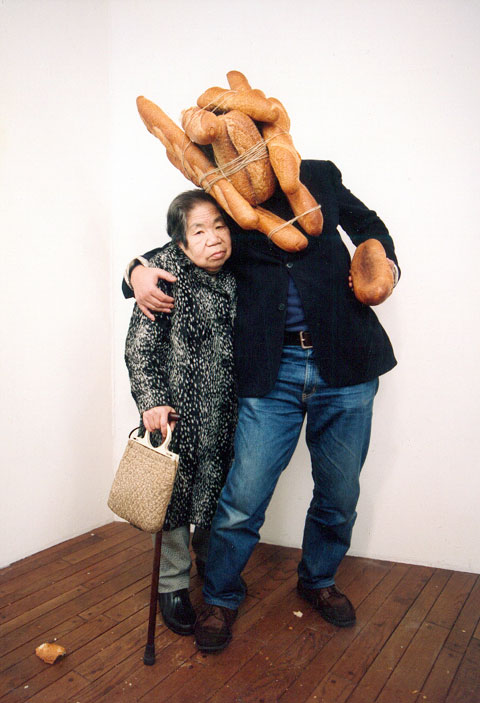No copyright infringement intended - photographs will be removed immediately upon request.
All the photographs in this chapter evolve from a strategy or happening orchestrated by the photographers for the sole purpose of creating an image.
The central artistic act is one of directing an event specially for the camera.
The roots of such an approach lie in the conceptual art of the mid-1960s and 1970s.
The act depicted in the photograph is what is artistically important.
In 1917, Marcel Duchamp, the father of conceptual art, submitted a factory-made urinal to the Armory Show in New York on the basis that art could be anything the artist designated it to be.
Today, only photographs remain of the original "Fountain", taken by Alfred Stieglitz.
Alfred Stieglitz - Fountain by Marcel Duchamp, 1917
French artist Sophie Calle's art works conflate fact and fiction, exhibitionism and voyeurism, and performance ans spectatorship.
For her work "The Hotel" Calle took a job as a chambermaid in Venice and during her daily cleaning of the bedrooms, she photographed the personal items of their temporary inhabitants, discovering and imagining who they might be.
Sophie Calle - L'Hotel, 1984
Photography's role in making and showing alternative realities has also been used in less specific but equally intriguing ways.
Melanie Manchot's series "Gestures of Demarcation" shows the artist expressionless and static asa second figure pulls the elastic skin of her neck.
This scene is not a performance being photographed but an act created for the express purpose of being photographed.
Melanie Manchot - Gestures of Demarcation VI, 2001
"Bread Man" is the performance persona of the Japanese artist Tatsumi Orimoto who hides his face under a sculptural mass of bread and then performs normal everyday activities.
The photographs representing these absurdist interventions are dependent on people's willingness and resistance to break with their daily activities in order to interact and be photographed.
Tatsumi Orimoto - Bread Man Son and Alzheimer Mama, 1996
The capacity of photo-conceptualism to dislodge the surface of everyday life through simple acts occurs in British artist Gillian Wearing's "Signs that say what you want them to say and not signs that say what someone else wants you to say".
For this work, Wearing approached strangers and the streets of London and asked them to write something about themselves on a piece of white card; she then photographed them holding their texts.
By making the thoughts of her subjects the focus of the portraits, Wearing proposes that the capturing of the profundity and experience of everyday life is not intrinsic to the traditional styles or compositions of the documentary photograph, but is more effectively reached through artistic intervention and strategy.
Gillian Wearing - Signs that say what you want them to say and not signs that say what someone else wants you to say, 1992
The enjoyment of such a photograph is based on our shift from registering a photographic image as a three-dimensional scene and that of a two-dimensional, graphic representation of the swirls of wet hair that we connect, via Van Gogh, to a patterned sky.
Mona Hatoum - Van Gogh's Back, 1995
The American photographer and poet Tim Davis's series "Retail" depicts the darkened windows of American suburban houses at night, with windows reflecting the neon signs from fast-food joints.
The photographs reveal a subliminal imposition of contemporary consumer culture onto domestic life.
With the repetition of this night time phenomenon express his theory of the contamination of our privacy and consciousness by commercialism.
Tim Davis - McDonalds 2, Blue Fence, 2001







No comments:
Post a Comment